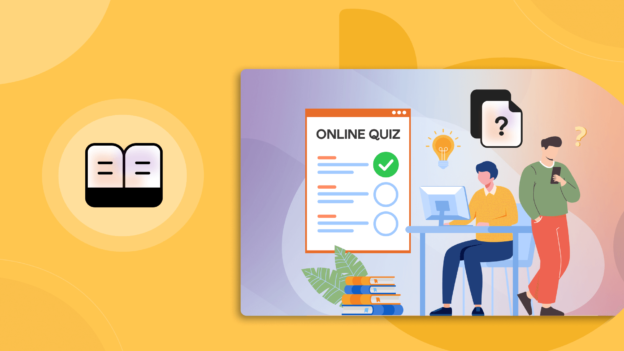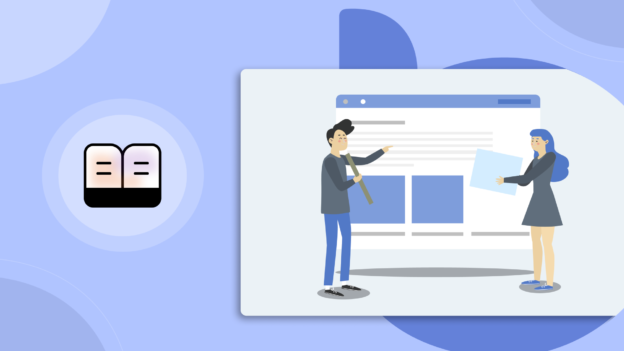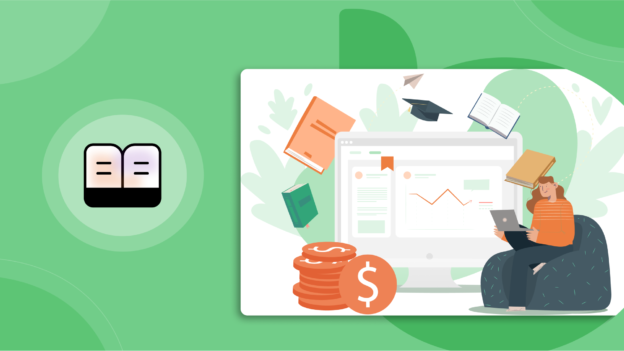Love them or hate them, push notifications are hard to ignore. We’ve all experienced the buzz, beep, or ding that pulls our attention to a new message or update. It’s the magic of push notifications – a ubiquitous feature of mobile apps and websites that demands attention.
Push notifications can take many forms – a text message, a sound, a badge, an icon, or even an image or video. They appear on your mobile device or desktop even when you’re not using an app or website, triggered by events such as receiving a new message, a reminder, or an update on a product or service.
While push notifications can sometimes be perceived as an annoyance, they’re an incredibly effective tool for businesses and publishers. In this guide, we’ll explore what is a push notification, the technical details of how they work, as well as the best practices for using them effectively.
What Is a Push Notification?

Push notifications are messages that are sent directly to the notification panel of a user’s mobile device. These messages are delivered in real-time and can be sent by mobile apps or websites, even when the app or website is not in use. Push notifications are a way to engage users, inform them of new content, updates, or important events, and encourage them to take action.
Push notifications can be used for a variety of purposes, such as:
- Reminding users about upcoming events or appointments.
- Informing users of breaking news or updates.
- Encouraging users to take action, such as completing a purchase or signing up for a service.
- Re-engaging users who haven’t used an app or visited a website in a while.
The Importance of Push Notifications
So now that you know what is a push notification and some of its purposes, let’s get to know more about why they have become an indispensable tool for mobile app developers, marketers, and publishers to keep their audience engaged and focused. Here are some of the key benefits of push notifications for both users and publishers:
Benefits of push notifications for publishers/businesses:
Increased Engagement: Push notifications can boost user engagement by prompting users to take specific actions and interact with their app or website. For instance, a retailer might send a push notification about a limited-time sale, encouraging users to visit their website and make a purchase.
Improved Retention: Push notifications can help businesses retain their users by reminding them of the value and benefits of their app or website. For example, a music streaming app might send a push notification about a new album release, reminding users about the benefits of their subscription.
Greater Conversions: Unsurprisingly, push notifications can also increase conversions by urging users to take specific actions, such as making a purchase or filling out a form. For instance, a travel booking app might send a push notification about a discounted flight, persuading users to book their travel plans.
Benefits of Push Notifications for Users:
Timely and Relevant Information: Push notifications offer users timely and relevant updates and reminders that cater to their interests and needs. For instance, a news app might send breaking news alerts to users interested in a particular topic, while a food delivery app might send notifications about nearby restaurants or promotions.
Personalization: Push notifications can also be personalized to individual users based on their preferences and behavior, creating a more engaging and customized experience. This level of personalization can enhance user loyalty and retention over time.
Convenience: Finally, push notifications provide a convenient way for users to stay informed and engaged with their favorite apps without having to actively open them. This can save users time and effort, making their overall experience more pleasant.
How Push Notifications Work

After knowing what is a push notification and why they are important, you might be wondering how exactly they work. Well, let’s make it clear to you.
Push notifications work by sending a message from a server to a device. When a user opts in to receive push notifications from an app or website, the app or website creates a unique device token for that user. This token is then used to identify the device and send messages to it.
There are two types of push notifications: local and remote.
Local Push Notifications: Local push notifications are created and delivered entirely within an app. They are triggered by events within the app, such as a reminder or an alert. For example, a fitness app might send a local push notification to remind a user to complete their daily workout.
Remote Push Notifications: Remote push notifications are sent from a server to a device. They are triggered by events that occur outside of the app, such as a message or an update. For example, a news app might send a remote push notification to alert users about breaking news.
Here’s how the technical process of remote push notifications works:
- User subscribes to push notifications: The user opts in to receive push notifications from the app or website.
- Device token is generated: The app or website creates a unique device token for the user’s device.
- Server sends message: The server sends a message to the device token, which is then delivered to the user’s device.
- User receives notification: The user’s device receives the message and displays the notification to the user.
It’s important to note that push notifications rely on an internet connection to function. If a user’s device is offline, they will not receive push notifications until they regain an internet connection. Additionally, users have the ability to turn off push notifications or adjust their notification settings at any time.
Best Practices for Implementing Push Notifications
While push notifications can be a powerful tool for engaging with users, it’s important to use them strategically and effectively. Here are some best practices for implementing push notifications:
Be relevant: The most effective push notifications are those that are timely and relevant to the user. For example, a retail app might send a push notification with a limited-time discount code when the user is near one of the brand’s physical stores.
Personalize the message: Users are more likely to engage with push notifications that are personalized to their interests and behavior. For example, a news app might send push notifications based on the topics the user has shown interest in.
Keep it short and sweet: Push notifications should be brief and to-the-point. The message should be clear and easy to understand at a glance.
Use actionable language: Use language that encourages users to take action. For example, a food delivery app might use the message “Your meal is on the way! Track your driver now.”
Test and optimize: Monitor the effectiveness of your push notification campaigns and adjust your strategy accordingly. A/B testing can be an effective way to optimize your messages and maximize engagement.
Mistakes to Avoid when Implementing Push Notifications
Sending too many notifications: Overloading users with too many notifications can lead to frustration and ultimately lead them to disable push notifications for your app.
Sending irrelevant notifications: Push notifications that are not relevant to the user’s interests or behavior can lead to them ignoring or disabling push notifications.
Sending notifications at the wrong time: Timing is crucial when it comes to push notifications. Sending notifications at inappropriate times, such as late at night, can lead to user annoyance and may even result in negative reviews for your app.
Examples of Successful Push Notification Campaigns

To illustrate what is a push notification capable of, let’s take a look at some successful campaigns that have utilized this tool effectively:
Starbucks: Starbucks uses push notifications to send personalized offers and promotions to customers based on their purchase history and location. For example, a customer might receive a push notification offering a discount on their favorite drink when they are near a Starbucks store.
ESPN: ESPN‘s sports app uses push notifications to deliver real-time scores, highlights, and news updates to users. These notifications are personalized based on the user’s favorite teams and sports, keeping them engaged and up-to-date on the latest news in their favorite sports.
Duolingo: Duolingo‘s language learning app uses push notifications to remind users to practice and stay engaged with the app. These reminders are personalized based on the user’s learning history and progress, encouraging them to keep up with their language studies.
H&M: H&M uses push notifications to promote new collections and limited-time offers to customers. These notifications are personalized based on the user’s location and interests, making them more likely to engage with the offer.
What made these campaigns successful? In each case, the push notifications were relevant, personalized, and timely. They provided value to the user, whether through personalized promotions, real-time updates, or reminders to stay engaged with the app. Additionally, these businesses monitored the effectiveness of their campaigns and adjusted their strategy based on user feedback and engagement data.
Start Utilizing the Power of Push Notifications
We hope you now have a clear understanding of what is a push notification and why they matter.
In conclusion, push notifications are a powerful tool for mobile app publishers looking to engage with their users and drive results for their business. By implementing best practices and learning from successful campaigns, publishers can use push notifications effectively to provide value to their users and build strong relationships with them.
At BuddyBoss, we understand the importance of push notifications for publishers, which is why our app for publishers includes an excellent push notification feature. With BuddyBoss App for Publishers, anyone can create a mobile app for their business without the need for coding expertise.
If you’re a publisher looking to leverage push notifications to engage with your audience, we encourage you to try BuddyBoss App for Publishers today. Our platform offers a variety of powerful features and tools to help you create and manage a successful mobile app for your business.











